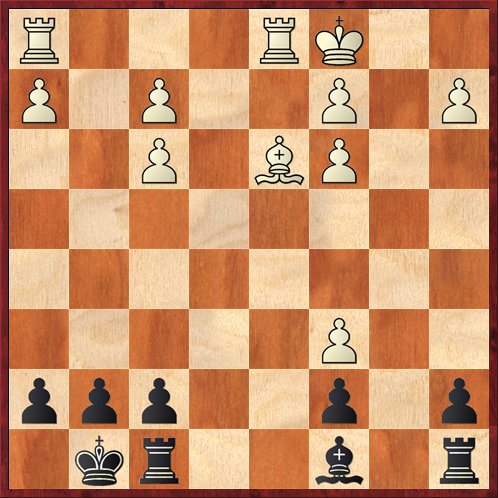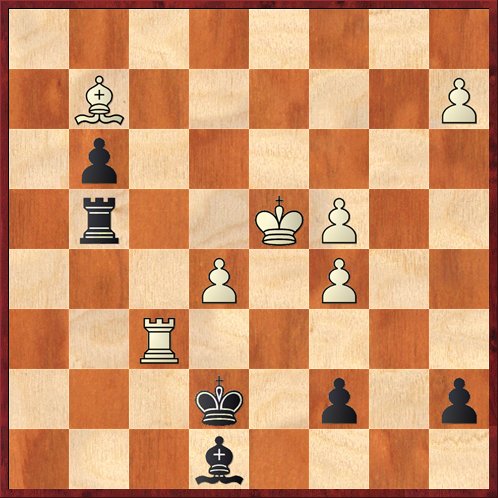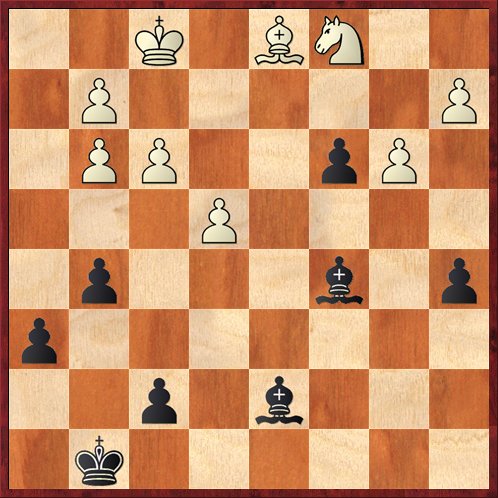I’m playing this weekend in the Far West Open in Reno, one of the two traditional big tournaments of the year in this city. This year it seems somewhat smaller than in the past, with around 160 players. The top of the wall chart is also missing some familiar names, because of the unfortunate fact that the U.S. Championship is going on at the same time. Thus people like Ehlvest, Ivanov, and Naroditsky who would usually be in Reno are in St. Louis instead. However, we do still have some good GMs and IMs such as Sergei Kudrin, Enrico Sevillano, and Steven Zierk, who got a big round of applause when TD Jerry Weikel introduced him before the first round.
The tournament has gotten off to a very good start for me, as I won both of my games on Friday as Black: round 1 against a class B player named Mohammed Soltani, and round 2 against FIDE Master Michael Langer. Both games followed a somewhat similar pattern. I sacrificed a pawn (or actually two in the first game) to get active piece play, but in both games I probably stood objectively worse. However, my opponents struggled, got into time pressure, and then blundered near the time control. For me, a player who usually gets into time pressure myself, it was really an enjoyable experience to be on the opposite side of the time trouble meltdowns.
Here are a couple snapshots from the two games:
Soltani — Mackenzie, after 14. bc.
I thought this was a pretty amusing position, and one of the assistant TDs thought so, too. White has two extra pawns, but he also has seven isolated pawns! I would say, “That’s got to be a record,” but probably somebody somewhere has managed to get all eight pawns isolated.
I felt pretty optimistic that I could draw this position, but to be honest IÂ didn’t see how I was going to win it. But Soltani got into time pressure, and we reached this position just before the time control:
Soltani — Mackenzie, after 39. … Rg4+.
Here White has to retreat with his king, but after either 40. Kd3 Bf7 or 40. Kc3 Bf7 I feel pretty good about my drawing chances. White can’t go too crazy about chasing Black’s queenside pawns because he always has to worry about things like … Rg4-f4-f2.
However, my last move (39. … Rg4+) also sets a trap. My opponent had 17 seconds left on his clock, and I thought there was a chance that he would miss the other point of my move. In fact, he thought for only about 2 of his 17 seconds, and then played:
40. Kd5?? c6+!
When he saw this, his face fell. “Is it mate?” he asked me. I’m not sure what the protocol is for such situations, but I did what I would have done in the kids’ chess club at the Aptos Library, when they have asked me, “Is this checkmate?” I pointed at the rook.
41. Rxc6 Bxc6+ 42. Kxc6 Rxc4
and Black is winning, although it did get a little bit tricky later on. In fact, my game was the last one to finish in the Open section in round one, which is a common theme with me.
In round two, against Langer, my pawn sac was born of necessity. In fact, he would probably say that he won the pawn, but I found a way to give up the pawn in such a way that I would get the two bishops and a ton of open lines, while his position was very cramped. Again, the computer would probably tell you that he stood better, but humans are not computers, and he struggled to free his pieces. Finally we got to this position:
Langer — Mackenzie, after 35. … Bd7.
Here the safest thing for White to do is play 36. Bc2, and there is no way that White can lose. But Langer probably didn’t like this because after 36. … Be3 or 36. … Ba3 the White knight is forced onto the a6-f1 diagonal, and I can then play 37. … Bb5. This forces a bishops of opposite colors endgame that looks like a very likely draw.
Instead Langer, who had about three minutes left to make five moves, gave me a gift-wrapped present:
36. Be2?? Be3 37. Nd3 c2 38. a4 c1Q 39. Nxc1 Bxc1
and with an extra bishop for two pawns that aren’t going anywhere, I won easily.
Well, I’ll have to play a little bit better today, because I can’t expect my opponents to keep giving me presents. However, I would have to say my two wins yesterday weren’t completely luck. I know masters who win game after game from positions that you would swear are dead even or inferior. Somehow their opponents always seem to make mistakes. Are they just lucky?
No. It’s all about creating the conditions for your good fortune. That means playing enterprising chess, posing difficult problems for your opponent, managing your time well and (hopefully) getting them into time trouble. And, of course, it means spotting the opportunities when your opponents do mess up.
One thing I was thinking about before this tournament was to view chess games as being like poker hands. (An appropriate thought for a tournament played in a casino.) In games of chance like poker, you have to accept the fact that sometimes — often, in fact — you may play a hand right but still lose. However, if you consistently play right over many hands, you will win more than you lose.
Chess is, of course, not a game of chance like poker. Nevertheless, it is a game of uncertainty. And from a practical point of view, uncertainty often works a good deal like chance. Just as in a game of chance, the way to manage this uncertainty is to set up the conditions where winning is possible, and where in fact over the long run you will win more than you lose. Every now and then it won’t work. Your opponent might come up with a miracle defense, or he might play perfectly in time pressure. But you have to keep an eye on the big picture. You have to permit yourself to lose now and then, as long as you are playing the kind of chess moves that normally win.
You can call it Dana’s Poker Theory of Chess.






{ 1 comment… read it below or add one }
Poker is generally considered to be a game of skill. Yes, the result of a single poker hand may depend on chance, but in the long run the better player will win.